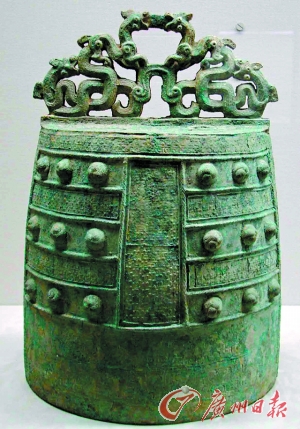 |
|
Bo bell coiling dragons design from 5th century BC is labeled as a gift of Ms. Sakamoto Kiku in the Tokyo National Museum. [Photo/gzdaily.com]
|
Sterling Seagrave said the Japanese looting was not carried out randomly, but was highly organized and carefully plotted. Since the early 1920s, large Japanese enterprises such as Mitsui and Mitsubishi sent intelligence personnel to make investigations of the source of wealth in China in the name of cultural exchange and academic research. This plan was named after a poem by Emperor Hirohito, and was called the "Golden Lily Plan". Chinese scholars' studies also confirmed the existence of the plan.
Besides, Sterling also stressed that Japanese troops grabbed mineral resources and ran opium farms and opium processing plants in Northeast and North China during the war. Japan's revival was based on the establishment of all kinds of "war trophies" from China and Southeastern Asia. The view is recognized by Professor Sato as well.
According to Professor Sato, U.S. officials in Japan conducted an investigation of the looted artifacts after the war. They confirmed that there were 17 places in Japan storing around 3 million ancient Chinese books looted during wartime, including the Japanese Imperial Palace, Tokyo Museum of Science and Tokyo Imperial University. Up to now, only 6 percent of them were returned to China.
"Chinese scholars demanded the Japanese government return these cultural relics after the war. Even now they keep doing the same thing as well. In that case, the museums dare not indicate the source of the Chinese relics. They don't want to provoke trouble for themselves," he added.

